It’s sweltering hot throughout most of the country right now, which can make it pretty darn tough to get motivated to hit the water. Combine the obvious physical discomforts of the summer heat with stubborn, lethargic bass and you’ll get a lot of empty boat ramps and discouraged anglers in your area.
The boat ramps on my local lakes look like ghost towns. That’s how I know the fishing is tough.
But don’t lose hope. If you can take advantage of a few important environmental factors while you’re on the water, you can have some surprisingly awesome days of catching—not just fishing. I’ll quickly explain what I’m talking about and I think you’ll notice a big difference on your next fishing trip.
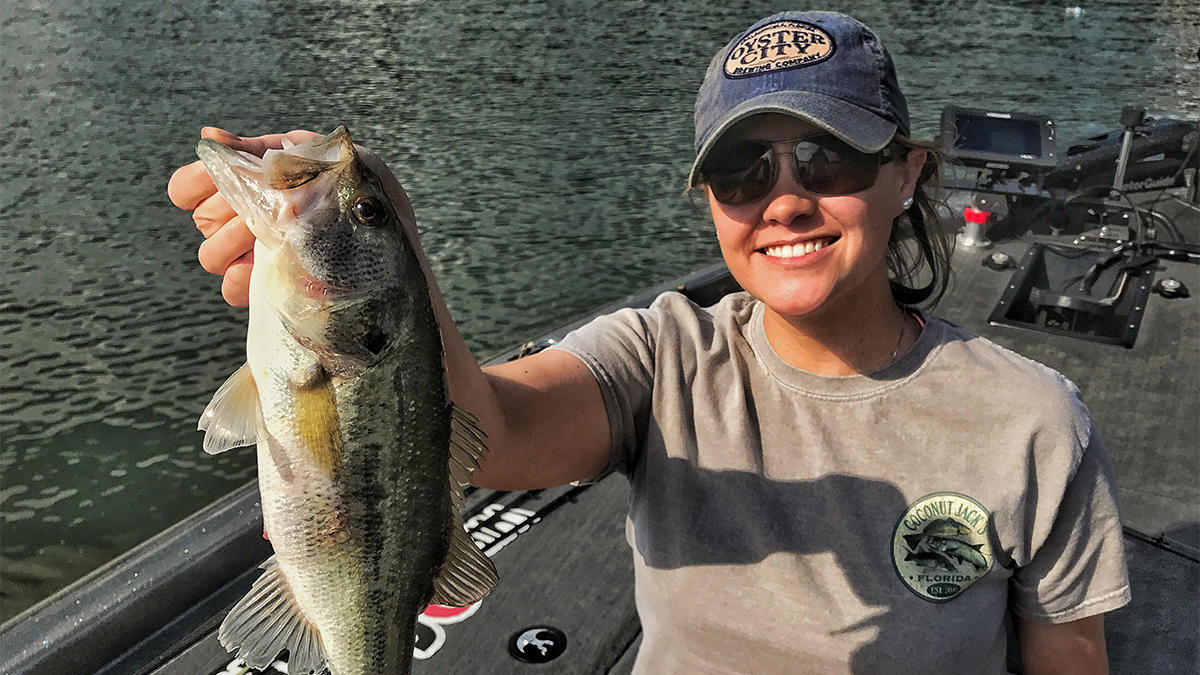
Any wind is your friend. Especially right now.
How many times have you heard this cheesy saying? We’ve had it drilled into our skulls for years, but now is not the time to shrug it off. You’ll enjoy some pretty awesome fishing windows if you can find even the slightest breeze during the brunt of summer.
While warm, summertime winds aren’t going to cause the surface temperature to plummet, they can certainly lower the temps by a degree or two. While this may seem like a menial difference to humans, it can really change the aggression with which bass feed. With many lakes and ponds reaching the 90-degree range, anglers need any and all help we can get in regards to lowering the water temperature.
In addition to a small temperature change, the wind also breaks up the surface tension of the water. This helps distort the fish’s view of your lure just enough to disguise any small, unnatural aspects such as treble hooks, split rings or fishing line. Essentially, that small surface disturbance inhibits one of their most relied upon senses, making them easier to fool with our artificial offerings.
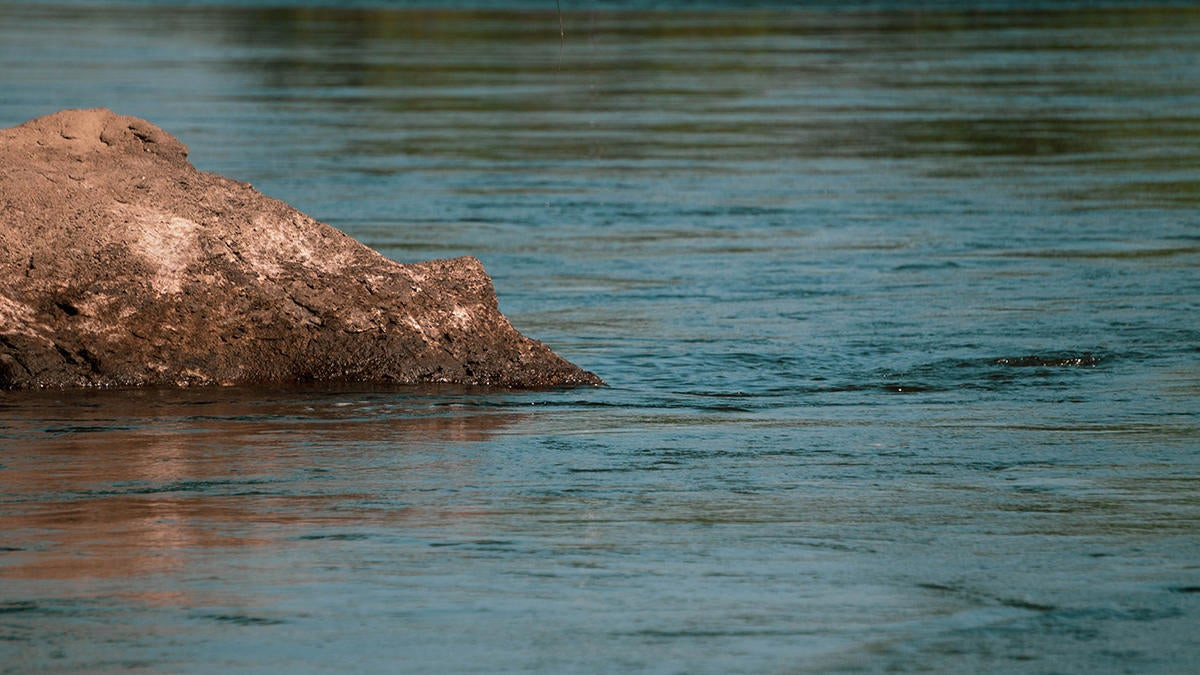
Summertime current should be taken advantage of
Watching the change in bass behavior when a lake authority starts moving water-or creating current-is pretty amazing. Within a matter of minutes, an incredibly tough day of fishing can turn into one of your best days of the year. But it’s important to make hay while you can, because these periods of current can be brief and when it stops, the bite often does, too.
For instance, I live on a power generation lake. When folks come home from work in the evenings, they turn on their air conditioners and lights. As a result, Georgia Power runs current from about 6pm until 9pm. That’s when I try to get on the water because it can make the bite red-hot during that small window because it positions fish in predictable places. Instead of having one or two fish on a piece of offshore structure, the current will concentrate them and there will be a few dozen on one area. Concentration of fish-and bait-creates competition, which results in more aggressive bass.
If you’re unable to pattern power generation current in your area, keep a close eye out for any water movement while you’re fishing. Watch the front posts of boat docks, buoys and bridge pilings for any moving water. Target any good-looking structure near or on points and you’ll likely catch quite a few bass.
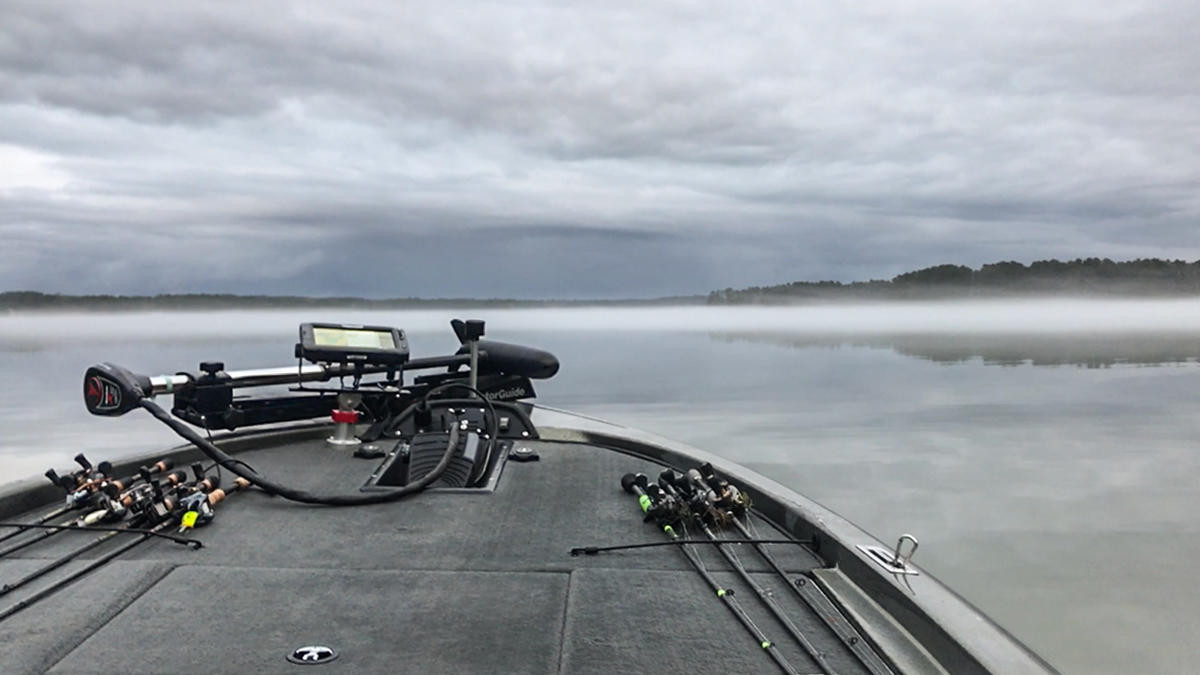
Cloudy days offer several advantages
This might be the most “Captain Obvious” sentence of the entire article, but whatever: Clouds make it a lot more comfortable for the angler. Less sweat running down your back, less sunscreen in your eyes and fewer third-degree burns on your metal boat latches. But there’s more to it than just comfort.
Like the windy conditions we discussed, cloud cover also helps break up your lure’s profile a bit. Again, this puts the odds a bit more in your favor and we need all we can get in the heat of the summer.
Additionally, I think cloud cover helps bass come out of their hidey holes a bit more frequently than in sunny conditions. I prefer shallow-water fishing if given the choice and over the years, I’ve noticed a bit more success on cloudy summer days. Instead of that big bass sitting 6 feet underneat a dock or locked down in the smack-dab middle of a giant laydown, they tend to leave their comfort zone and hunt a little more.
If I’m able to schedule around the forecast, I’m much more apt to choose a cloudy day than a sunny one. I’ll target grass lines and other edges (seawalls, old dock posts, etc.) in these conditions because they’ll use these edges like a little highway as they patrol for any readily available forage. With the aforementioned cover nearby, they can easily pull off these highways and wait in prime areas to attack unsuspecting prey.
Oh, and by the way: Throw a hollow-bellied frog or soft-plastic toad in these conditions. Just try it.
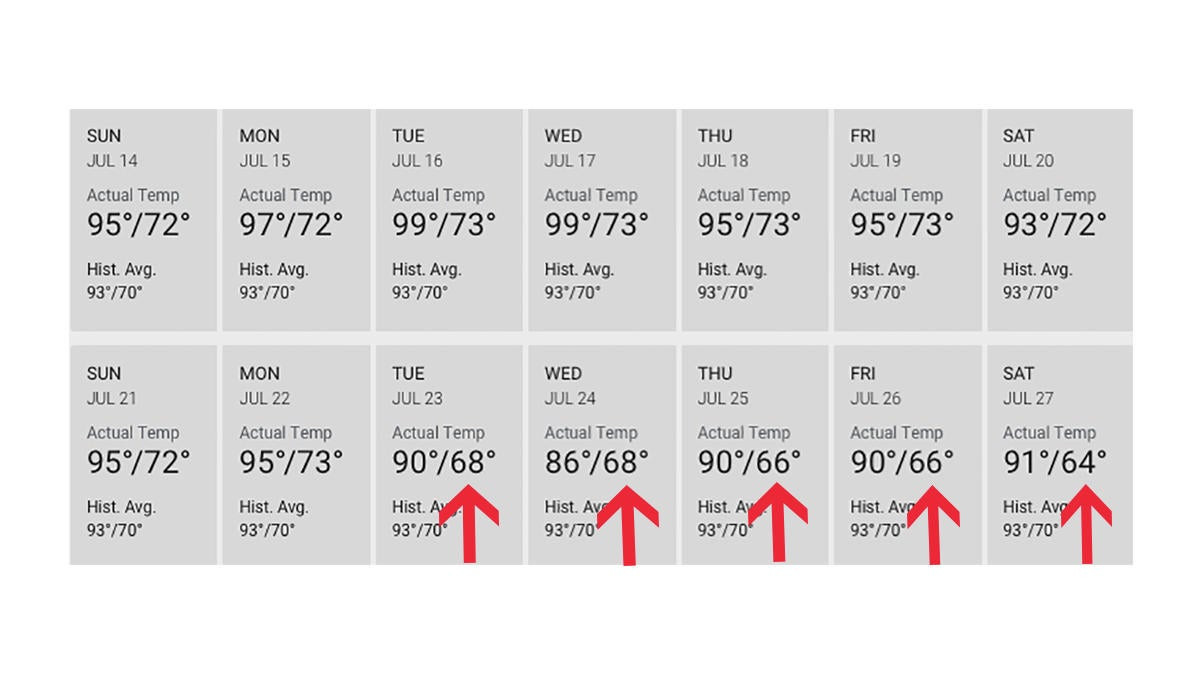
Cold fronts can jumpstart the action
Sealock and I were talking about this a few weeks ago and I definitely think it needs to be mentioned in this piece. Before we go any further, however, it’s important to note that “cold front” is an extremely relative term this time of year. I’m not necessarily talking about anything drastic. But heck, even a five or eight-degree change can and will make a world of difference.
It’s also imperative to not only pay attention to daytime temperatures. A few consecutive cooler nights can ignite a red-hot bite this time of year.
For instance, we had several great days of fishing a few weeks ago in my area. I looked back at the actual temperatures for that time period and sure enough-cooler temperatures crept into our area, especially in the evenings, and the bass bit in a big way. In the image above, you’ll see exactly what I’m talking about.
If you want to take things a step further, definitely check out BassForecast.com and download the app to your mobile device. It’s a really cool way to use the weather and conditions to your advantage.
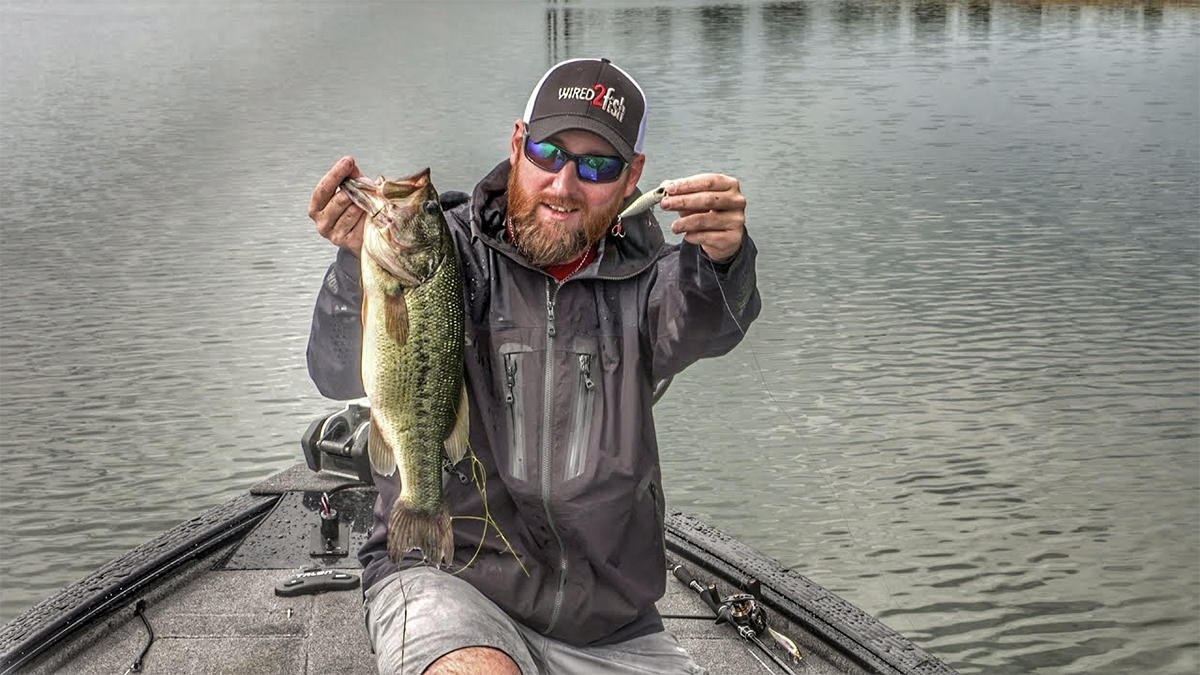
Showers and storms bring welcomed volatility
Afternoon storms are commonplace throughout most of the country this time of year, but be careful not to take them for granted. Along with these pop-up showers come a sharp change in barometric pressure which, for whatever reasons, gets bass chewing. When the clouds start building and that breeze picks up a tad, it’s time to get to your best stuff quickly because something special is about to happen.
While the change in atmospheric pressure certainly plays a considerable role in this situation, the accompanying winds also push bait towards shallow cover or even bare banks. When this happens, the bass will be nearby looking to capitalize.
When you see a storm starting to build, I suggest covering water as quickly and efficiently as possible. Cast parallel to the bank and burn through as much high-percentage water as you can. Personally speaking, I don’t throw bottom-contact baits in these situations becuase they’re just too slow. I want to put some sort of fast-moving bait in front of as many bass as I can to capitalize on this sometimes miniscule window. My favorites are buzzbaits, soft-plastic toads, walking topwaters and willow leaf spinnerbaits. Keep moving and good things will happen.
And please, don’t put fish before your safety. I always try to be aware of the closest place to take cover if things get hairy. If you hear thunder, you can get struck by lightning. Use your better judgement and get off the water. If you know there is stormy weather on the horizon, make a plan. A bass isn’t worth your life.
Summer fishing can get frustrating. If you’ve been having more unproductive outings than usual, you’re not alone. My colleagues here at Wired2fish and I have been constantly picking each other’s brains lately. If you can find or run across any of these factors we discussed, I truly believe you’ll have a better bass fishing experience throughout the rest of the summer.












